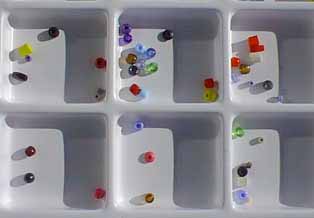index - module 1 - module 2 - module 3 - module 4 - module 5 - module 6 - module 7 - module 8
 From Start to Finish
From Start to Finish 
Module Two
Writing as Process
| Simple words. Powerful strategy.
What are the basic elements of such strategy and how can a computer help? For this workshop we will emphasize the stages in the diagram below, each of which is briefly described following the diagram. Please note that the diagram is more linear than what occurs with real writing, since the process is actually more circular, recursive and cyclical. As you look at each of the stages, ask yourself which one will be the biggest challenge for you in your own writing.
Later modules will give you a chance to try these stages and learn more about them. |
|
|
|
|
|
|
|
|
1 Pre-Writing This is a wide open spaces, blue sky phase. The goal is to generate and collect as many ideas, words and fragments as possible. Better to avoid sentences and paragraphs. Good time to sketch and play and scribble. No performance pressures. It is helpful to think of filling up a bead tray. We hold off stringing the beads until much later.
The teacher may provide stimulating activities to "warm up" the students or students may take responsibility for this stage, collecting ideas in a writing journal over time, for example.
2 Enrichment & Incubation Once we have made our first word sketches and started filling up our bead trays, we begin ranging a bit further afield, seeking additions. We may go on a beach walk . . . or a flight of fancy . . . or a fancy flight. We seek experiences which may deepen and enrich our first efforts. Some folks call these journeys of the imagination, excursions. We allow our playful selves to explore and wander like children crossing a vast meadow. We open our selves to the many colors in the evening sky. We stir the soup pot of our sub conscious so the best parts do not stick to the bottom. We cultivate a sense of wonder.
3 First Writings At this stage we begin stringing the beads we have collected. We start moving our bits and pieces around. Not afraid to mix metaphors, we hop, skip and jump about to see which words fit with which others. This is a time to move towards collections of phrases and an occasional sentence, but we continue to keep the fragments in a "state of flux." We begin to lay the pieces out in what starts to look like some order, but we are not bound by the sequence. We add to those ideas which invite our attention. We lose little time worrying over others. We do not sit and stare. We keep moving. We make every effort to suspend critical judgment here, waiting for a later stage to refine our language and our expression. In some ways this expansion is like the swelling of an accordion as it is pulled apart and filled with air (in this case words and ideas). Later we shall compress and refine.
4 Peer Review Once we have pulled our ideas into some semblance of order, we begin to share what we are building with a group of peers who have been taught how to offer supportive and constructive audience reactions. This stage is useful only if the peers avoid strong handed advice and criticism.
5 Additions & Alterations Now we take advantage of our synthesis skills to consider ways of modifying the elements of what we have collected. We are especially interested in adding ingredients to complete the picture we are drawing or the argument we are making. In some ways this stage is akin to finishing up a jigsaw puzzle. We have put enough together to see the outlines of the finished product, but there are still missing pieces and work to be done. This is the time to add richness, flavor, depth and color.
6 Re-Writing: The Six Traits of Effective Writing* In this final stage we consider how we can add to the impact of our writing by reviewing each of the following:
*Ruth Culham and Vicki Spandel, The Student Friendly Guide to Working with Traits at http://www.nwrel.org/assessment/
|
|
|

